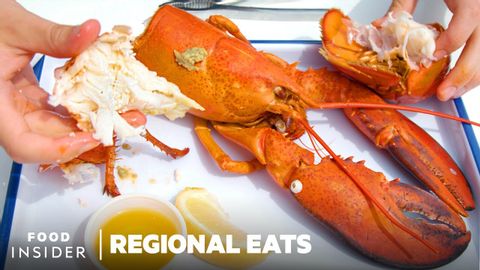
Subtitles & vocabulary
How Lobster Fishers In Maine Catch Lobster For Restaurants Around The World | Regional Eats
00
林宜悉 posted on 2022/03/31Save
Video vocabulary
literally
US /ˈlɪtərəli/
・
UK
- Adverb
- In a literal manner or sense; exactly as stated.
- Used for emphasis to describe something that is actually true, often to highlight surprise or intensity.
B1
More process
US /ˈprɑsˌɛs, ˈproˌsɛs/
・
UK /prə'ses/
- Transitive Verb
- To organize and use data in a computer
- To deal with official forms in the way required
- Noun (Countable/Uncountable)
- Dealing with official forms in the way required
- Set of changes that occur slowly and naturally
A2TOEIC
More metabolism
US /mɪˈtæbəˌlɪzəm/
・
UK /məˈtæbəlɪzəm/
- Uncountable Noun
- Chemical processes to convert food to energy
- The rate at which the body uses energy.
B2
More destination
US /ˌdɛstəˈneʃən/
・
UK /ˌdestɪˈneɪʃn/
- Noun
- The place you are traveling to
- A place regarded as worth visiting or traveling to.
B1TOEIC
More Use Energy
Unlock All Vocabulary
Unlock pronunciation, explanations, and filters
